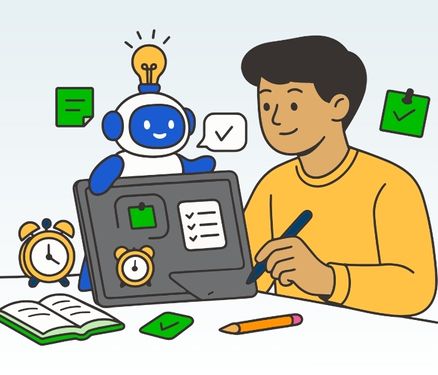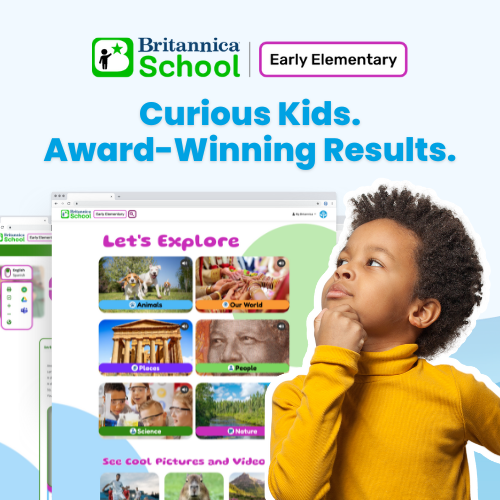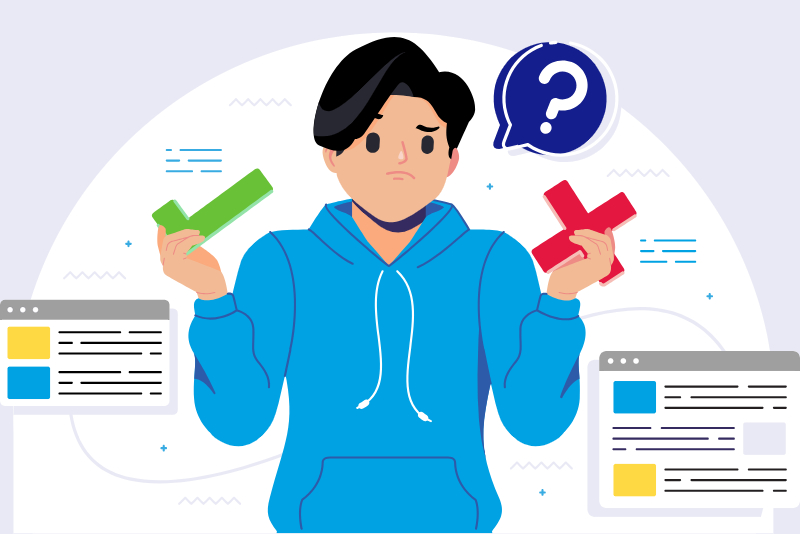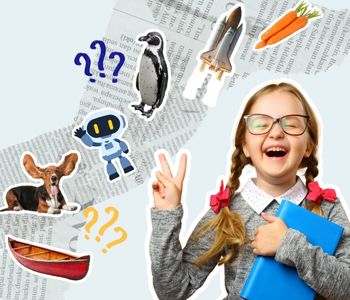

Turning AI Into a Learning Ally: 3 Ways to Build Student Confidence and Curiosity
Kristie Bangali
Table Of Contents
AI is quickly becoming a part of everyday learning, but how it’s used makes all the difference. Students can use AI as an effective tool to brainstorm, research, and refine ideas, but only when they understand its limits and possibilities. By framing AI as a learning ally, you can help students strengthen their creativity, critical thinking, and media literacy, all while keeping curiosity at the center of teaching and learning.
1. AI as a Creative Collaborator
AI shouldn’t be treated as a shortcut to finished work but as a co-creator in the learning process. Research suggests that when students use AI as a collaborator rather than a shortcut, they are more likely to take ownership of their thinking, generate original ideas, and reflect critically. For instance, in one study of human-AI collaborative problem-solving, more than 77% of students perceived they led or equally contributed to collaborative tasks when working with AI.1
In classroom settings, AI has also been shown to help students explore ideas in low-stakes environments, acting as a brainstorming partner while still preserving student creativity and judgment.2
Try This Activity: Assign AI a “job title” in group projects (Idea Starter, Editor, Fact Checker). Students decide what AI contributes—and what must be done by humans.
Then, have students debrief afterward. Ask: “What did AI add to your process? What ideas were yours? What would you change next time?” This helps them distinguish between human and AI contributions while reinforcing reflection.
2. Building Ethical Foundations through Transparency
An important principle of AI use is transparency. It’s important to teach students that when they use AI, they should always acknowledge it—just as they would cite their sources in research or writing. This transparency serves multiple purposes: it maintains academic integrity, helps students develop critical evaluation skills, and creates opportunities for meaningful reflection on the learning process.
Some AI tools pull from unknown sources and can present misleading information with confidence. That’s fine if you’re asking for a silly poem about a purple rhino, but not when you’re studying history, science, or literature. Students must understand how AI works and also when the tool falls short. Additionally, when they use AI, they should be clear about when and how they use the tool. Use the Real or AI Quiz to challenge students to observe, analyze critically, and judge carefully.
Try This Activity: Have students compare an AI-generated definition of “photosynthesis” with the same term in Britannica School, where the definition is powered by Merriam-Webster.
Which is clearer? Which would they trust in a science report? Connect this idea to real-world ethics: just as journalists and researchers must cite their sources, students should disclose when and how they used AI.
3. Project-Based Learning as the Ideal Framework
Project-based learning (PBL) emphasizes inquiry, collaboration, and creation, offering an ideal setting for students to explore AI’s potential while maintaining ownership of their learning. The collaborative nature of PBL encourages students to use AI as a brainstorming partner, research assistant, or feedback tool without bypassing their own work.
In this setting, students get to experiment with AI’s strengths and weaknesses while developing the critical thinking and media literacy skills they’ll need for the future. The key is ensuring that AI enhances rather than replaces student thinking and creativity.
Try This Activity: In a history project, ask AI and Britannica School the same research question. For example, “What were the main causes of the American Revolution?” Have students compare answers and then create a Venn diagram of overlaps, gaps, and errors.
Shaping Responsible AI with Britannica Education Solutions
Educators and students deserve tools they can trust. That’s why every Britannica solution starts with credibility and builds toward creativity.
Britannica Studio: Trusted Knowledge. Teacher Power.
Britannica Studio is your teacher-first AI workspace, designed to help educators turn Britannica’s verified, standards-aligned content into classroom-ready materials in minutes without sacrificing accuracy or confidence.
While other AI tools hallucinate or mix fact with opinion, Studio is grounded in Britannica’s fact-checked, bias-aware knowledge base. Every output is linked to a trusted source, helping teachers move from idea to instruction safely and efficiently.
With Britannica Studio, teachers can:
AI you can actually trust. Built for teachers. Backed by Britannica.
ASK Britannica: Fact-Checked Answers, Instantly
ASK Britannica is an AI-powered search experience offered in Britannica School that is built on Britannica’s fact-checked knowledge base, not the open internet.
Unlike traditional search tools, ASK Britannica filters queries for safety, understands natural questions, and connects responses to verified Britannica articles and related topics. It supports multi-turn conversations, making follow-up questions and deeper exploration seamless.
ASK Britannica gives educators and students quick access to Britannica’s verified knowledge base, powered by AI but grounded in expert editorial standards. It’s search reimagined: efficient, safe, and designed to build information literacy.
Professional Learning & Media Literacy Resources
Britannica Education also supports educators with Professional Learning for Media Literacy and AI, including expert-led coaching and interactive sessions that empower teachers to explore AI concepts, model responsible use, and teach students to think critically about the media they consume.
Together, these tools help educators bring responsible AI to life, preparing every learner to ask better questions and foster deeper thinking.
Lead the Way: Shaping Responsible AI in Your Classroom
When students use AI with curiosity and care, they begin to see it not as a shortcut but as a spark offering a way to ask better questions and uncover deeper understanding. As educators, you have the power to turn every AI moment into a learning moment, guiding the next generation of thinkers to explore boldly and learn responsibly. Because when curiosity leads, learning truly follows.
1 Zhu, G.; Sudarshan, V.; Fok Kow, J.; Soon Ong, Y. (May 19, 2024). “Human-Generative AI Collaborative Problem Solving Who Leads and How Students Perceive the Interactions.” Cornell University. https://arxiv.org/abs/2405.13048
2 Habib, S.; Vogel, T.; Thorne, E. (January 22, 2025). “Student perspectives on creative pedagogy: Considerations for the Age of AI.” Thinking Skills and Creativity, 56-1. https://www.sciencedirect.com/science/article/pii/S1871187125000161

About the Author
Kristie Bangali
Curriculum & Instruction Learning Specialist
Kristie, a Curriculum Learning Specialist at Britannica Education, has over 20 years of experience in pedagogy and curriculum development. She specializes in aligning educational content with academic standards and adapting to diverse student needs. Kristie’s proficiency with digital learning platforms was pivotal during the Covid-19 pandemic, earning her the 2020 LHRIC TELL Award and 2021 Teacher of the Year. She authored a chapter in “Gamify Literacy: Boost Collaboration and Learning,” published by the International Society for Technology in Education (ISTE), showcasing her innovative approach in education. Her impact extends beyond direct teaching, influencing the broader educational landscape.











